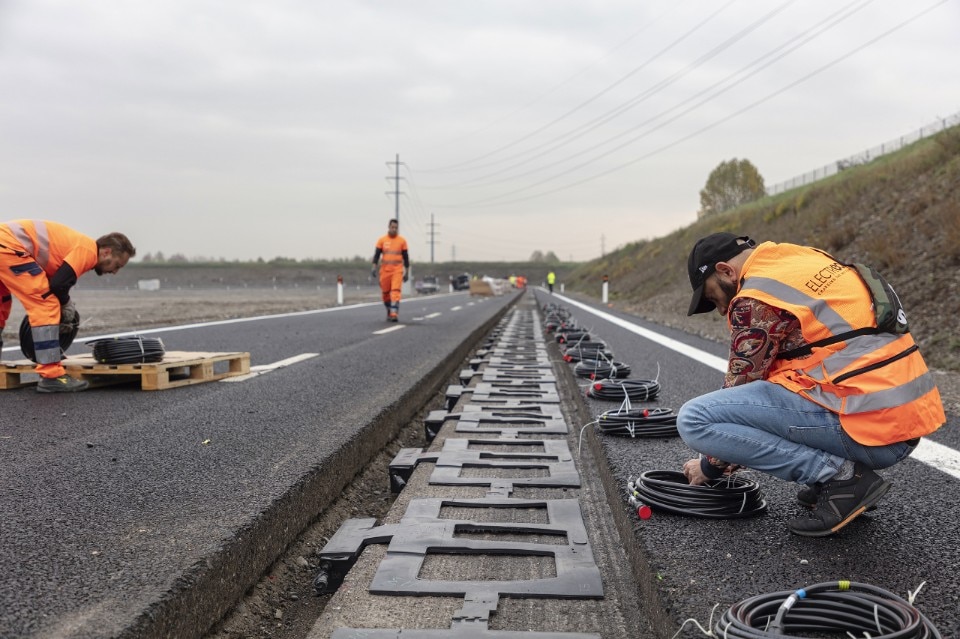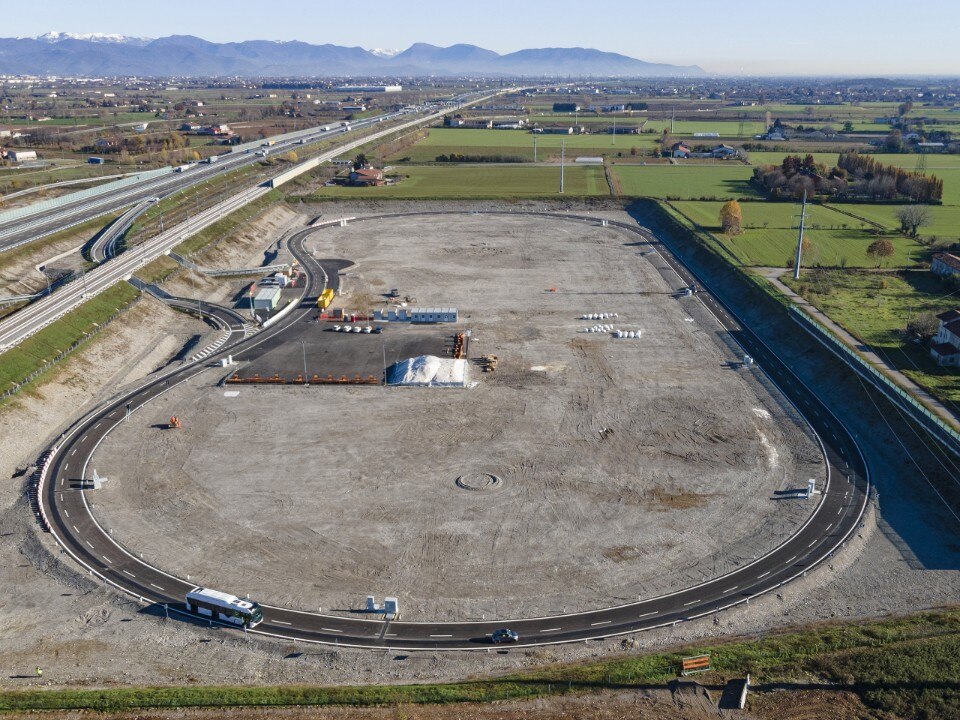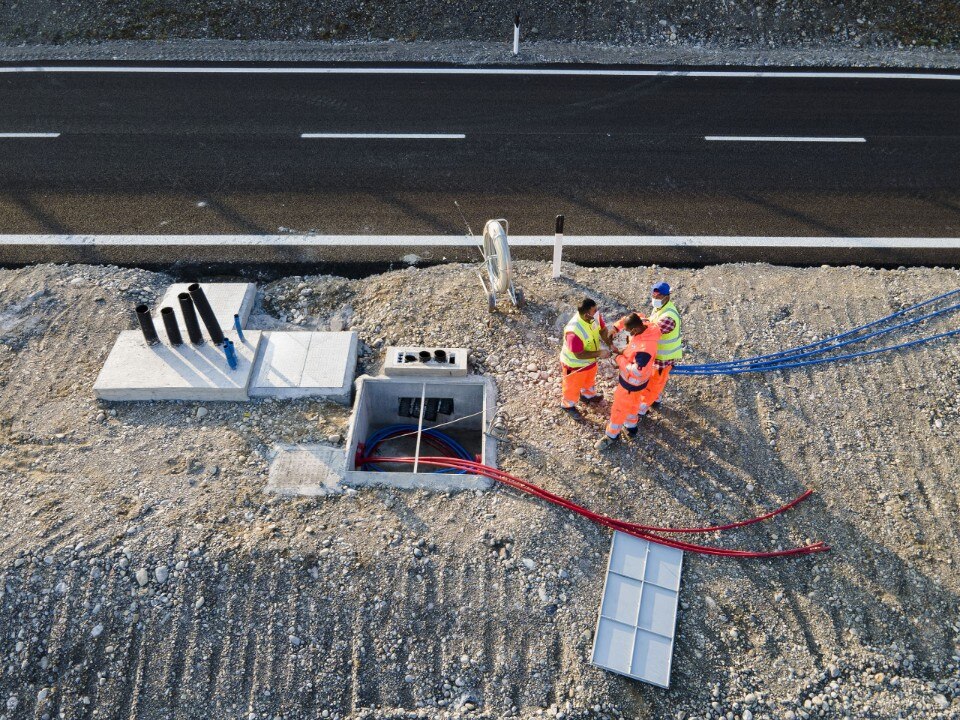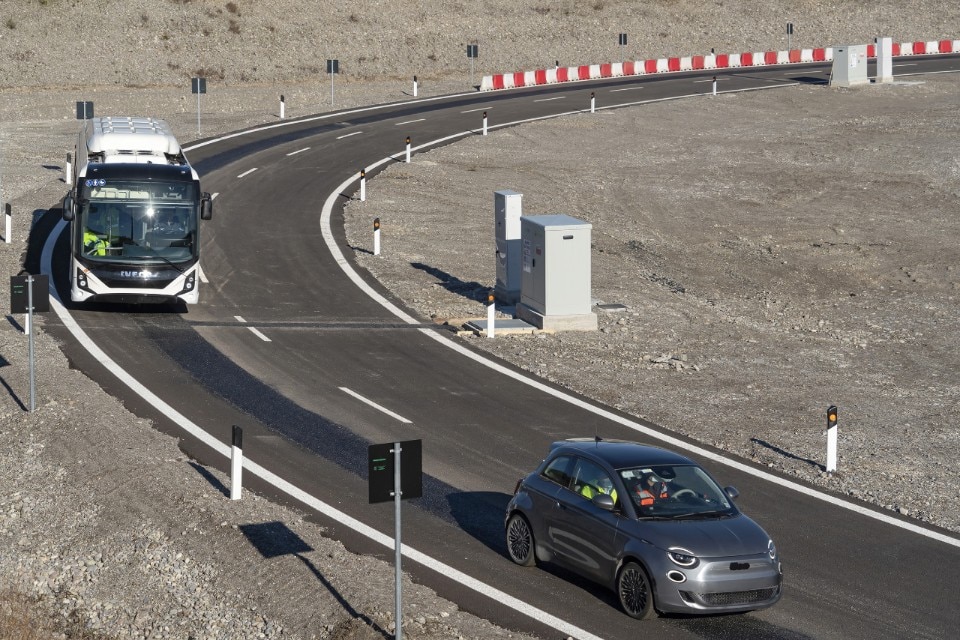The road to an increasingly sustainable mobility future is not only paved with good intentions. But above all, by new materials and technologies that work together to reduce the environmental impact of so-called asphalt (actually a bituminous conglomerate composed of various elements), or even to make road surfaces the digital platform for supporting the expected future of smart mobility. With regard to the first front of the challenge, i.e. reducing the impact of materials and laying processes, the research and development laboratories of the main operators are taking important steps. Small experiments that are still a long way from bringing the 80 million kilometres of roads that - according to the World Economic Forum - criss-cross the globe to a totally green version, but which indicate what good directions are being taken.
“The contribution of the road pavement sector to the achievement of climate goals,” said Edo Ronchi, President of the Foundation for Sustainable Development, at the latest Asphaltica, the trade fair dedicated to road pavement technologies and solutions, “can come from a renewed management approach from the perspective of the life cycle of the pavement itself - from design, to the choice of materials, to the execution of the works - that favours the circularity of resources and reduces greenhouse gas emissions. Life-cycle oriented management also optimises the economic resources of the managing authorities and public administrations and ensures greater safety for users. Suffice it to say that, in terms of life cycle, carrying out pavement maintenance works with innovative and circular technologies that allow for the complete recycling of asphalt mixes at reduced temperatures, generates savings of up to 40 per cent of CO2 equivalent emissions compared to works carried out with the traditionally adopted hot methods, as well as reducing the pressure on natural capital for the production of bitumen and virgin aggregates”.

In this area, an Italian case is marking a point of excellence. At the end of 2022, an agreement was signed to make a 250 km stretch of the Milan-Turin motorway the first ‘sustainable motorway in Europe’. Astm, manager of the A4 and the world’s second largest operator of motorway networks under concession, has in fact announced that the resurfacing of a 125 km section in both directions of the slow lane of the major motorway artery in northern Italy will be repaved using Gipave, a technology developed by the Italian company Iterchimica in collaboration with the a2a group and the university of Milan-Bicocca, which produces a material consisting of graphene, recycled hard plastics (such as toys, fruit boxes and litter bins) and 70% recycled asphalt.
The material production plant will be located directly in the middle of the motorway section, thus also cutting transport costs and impacts, and will reuse 70% of milled material from existing pavements, thus reducing the use of new natural aggregates to only 30%, and 1.5 million kilograms of hard plastics, leading to a saving of almost 23 million kilos of bitumen and 480 million kilos of raw materials extracted from quarries (-40% of non-renewable materials compared to traditional technologies). In addition to being sustainable, Gipave is expected to ensure greater strength and increase pavement durability by up to 75%. “This work is a first step towards putting Italy in the vanguard and in line with the ecological transition goals set out in the UN’s 2030 Agenda,” said Federica Giannattasio, Managing Director of Iterchimica: “We will achieve a reduction in emissions of up to 38.5% compared to traditional maintenance technologies.”

But in addition to betting on an asphalt that is intrinsically greener in terms of its composition and laying process, an innovative way forward is to consider the road strip not as an inert object, a sort of necessary evil, but as an enabler of new mobility. Looking this time at the north-eastern quadrant of the Italian motorway network, the intelligent asphalt experiment initiated by the A35 Brebemi-Aleatica represents an international case history. In the specially built circuit near the Chiari Ovest exit of the A35, known as the Arena of the future, the DWPT (Dynamic Wireless Power Transfer) induction recharging technology, which allows electric vehicles to recharge themselves by travelling in wired lanes thanks to an innovative system of loops positioned under the asphalt, reached its ‘road test’ phase a few months ago. This technology is adaptable to all vehicles equipped with a special receiver that directly transfers the energy needed to charge and run them, for a zero-emission mobility system.
As Matteo Milanesi, General Director of the A35 Brebemi-Aleatica, emphasised in contextualising this project, “the transition to electric mobility cannot be limited to replacing combustion vehicles with electric vehicles.”

For this experiment, A35 Brebemi-Aleatica is leading an enlarged research group comprising three university centres (Politecnico di Milano, Università Roma Tre, Università di Parma), as well as companies and operators such as ABB, Electreon, FIAMM Energy Technology, IVECO, Mapei, Pizzarotti, Prysmian, Stellantis and TIM. Among the advantages that have emerged from these first months of testing of the system are greater energy efficiency of the vehicle thanks to recharging en route, a reduction in the volume of batteries in vehicles without impacting the capacity for loading goods and people, and an increase in the average life of the battery itself thanks to the fact that recharging peaks would be avoided because it would be recharged at intervals during the day. “Once fully operational, this technology can contribute to improving the quality of the user’s journey, thanks to a significant reduction in dwell times for recharging due to the optimal combination of different charging systems.
All these objectives are also achievable thanks to the innovative technologies offered by 5G and application solutions based on Artificial Intelligence, which will facilitate the exchange of information between the vehicle and the management platforms, increasing road safety and travel efficiency,” Milanesi concludes.


